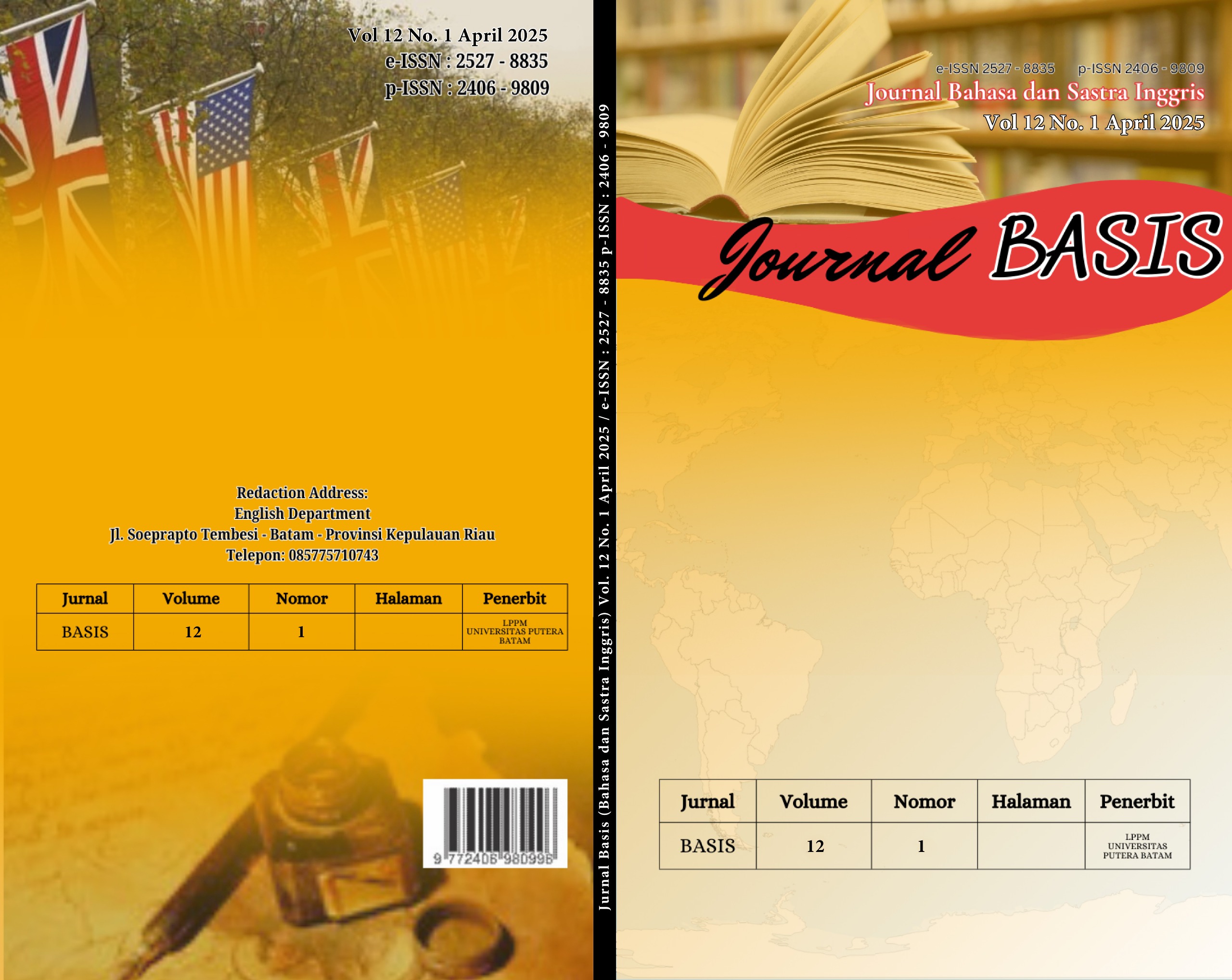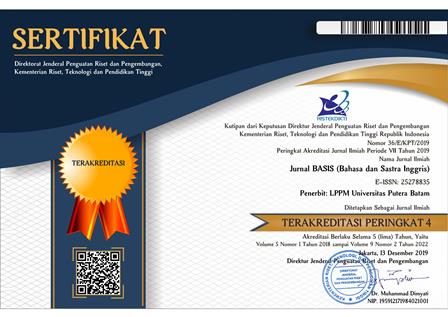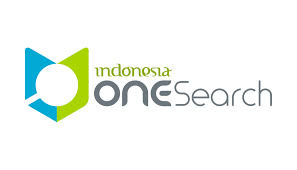CLIL-BASED MULTISENSORY INTENSIVE READING IN AN ESP PROGRAM
DOI:
https://doi.org/10.33884/basisupb.v12i1.9457Kata Kunci:
CLIL, Multisensory Learning, ESP, Intensive Reading, Technology IntegrationAbstrak
Penelitian ini menyelidiki tentang integrasi pendekatan multisensory dalam kerangka Content and Language Integrated Learning (CLIL) untuk meningkatkan keterampilan membaca intensif di kalangan mahasiswa English for Specific Purposes (ESP). Menyadari tantangan yang dihadapi oleh mahasiswa ESP dalam memahami teks-teks kompleks dan spesifik, penelitian ini melibatkan 25 mahasiswa farmasi di sebuah universitas di Indonesia, Desain penelitian ini menggunakan metodologi studi kasus kualitatif dengan observasi kelas, wawancara mahasiswa, dan survei umpan balik untuk mengevaluasi efektivitas penggunaan multisensori berbasis CLIL. Hasil penelitian menunjukkan adanya peningkatan signifikan dalam pemahaman membaca dan tingkat keterlibatan mahasiswa setelah dilakukan intervensi. Penggunaan aplikasi multimedia dan aktivitas interaktif memperkaya pengalaman belajar mahasiswa dan mendukung berbagai gaya belajar mereka. Namun, tantangan terkait penggunaan teknologi yang belum familiar menyoroti perlunya pelatihan tambahan bagi mahasiswa dan instruktur. Temuan ini menegaskan potensi penggabungan pembelajaran multisensori dengan CLIL dalam konteks ESP, serta menekankan pentingnya pengembangan professional bagi pendidik untuk mengoptimalkan strategi pengajaran. Penelitian di masa depan disarankan untuk mengeksplorasi dampak jangka Panjang dari pendekatan multisensori terhadap keterampilan bahasa lainnya dan penerapan di berbagai konteks pendidikan.
Referensi
Alonso, C., & Macaro, E. (2021). The role of vocabulary knowledge in content and language integrated learning: A systematic review. Language Teaching Research. https://doi.org/10.1177/1362168820982949
Anthony, L. (2018). Introducing English for specific purposes. taylorfrancis.com. https://doi.org/10.4324/9781351031189
Aydin, S. (2021). Technology in ESP instruction: Practices, benefits, and challenges. Journal of Educational Technology & Society.
Belcher, D. (2012). What ESP is and can be: An overview of development. TESOL Quarterly.
Bogdan, R., & Biklen, S. K. (2007). Qualitative research for education: An introduction to theories and methods (5th ed.). Pearson.
Braun, V., & Clarke, V. (2006). Using thematic analysis in psychology. Qualitative Research in Psychology, 3(2), 77–101. https://doi.org/10.1191/1478088706qp063oa
Costa, F., & D’Angelo, L. (2019a). CLIL (Content and Language Integrated Learning): Critical review and future direction. International Journal of Bilingual Education and Bilingualism. https://doi.org/10.1080/13670050.2019.1631900
Costa, F., & D’Angelo, L. (2019b). CLIL and ESP: Synergies and Divergences in Higher Education Contexts. Journal of English for Academic Purposes, 41, 100768. https://doi.org/10.1016/j.jeap.2019.100768
Coyle, D., Hood, P., & Marsh, D. (2021a). CLIL: Content and Language Integrated Learning. Cambridge University Press.
Coyle, D., Hood, P., & Marsh, D. (2021b). CLIL: Content and Language Integrated Learning in Bilingual and Multilingual Education. Cambridge University Press.
Creswell, J. W., & Poth, C. N. (2018). Qualitative inquiry and research design: Choosing among five approaches (4th ed.). SAGE.
Dalton-Puffer, C. (2011). Content-and-language integrated learning: From practice to principles? Annual Review of Applied Linguistics. https://doi.org/https://doi.org/10.1017/S0267190511000092
Dalton-Puffer, C. (2020a). Discourse in content and language integrated learning (CLIL) classrooms. John Benjamins Publishing.
Dalton-Puffer, C. (2020b). Research on CLIL: Where Do We Stand? International Journal of Bilingual Education and Bilingualism, 23(4), 361–375. https://doi.org/https://doi.org/10.1080/13670050.2019.1651810
Day, R. R., & Bamford, J. (1998). Extensive reading in the second language classroom. Cambridge University Press.
Dörnyei, Z. (2007). Research methods in applied linguistics: Quantitative, qualitative, and mixed methodologies. Oxford University Press.
Frigols-Martin, M. J. (2021). Digital Tools for Multisensory CLIL: Enhancing Content and Language Learning through Technology. Innovations in Language Learning and Teaching, 15(2), 145–160. https://doi.org/10.1080/17501229.2019.1631821
Garcia, O., & Wei, L. (2020). Multilingualism and Multisensory Learning: An Interdisciplinary Approach. Cambridge University Press.
García, O., & Wei, L. (2020). Translanguaging and Multisensory Learning in CLIL: Towards a More Inclusive Approach to Language Education. International Journal of Multilingualism, 17(4), 527–543. https://doi.org/10.1080/14790718.2020.1721271
Gonzalez-Lloret, M., & Ortega, L. (2014). Technology-mediated TBLT: Researching technology and tasks. John Benjamins Publishing Company. https://doi.org/10.1075/tblt.6
González, A., & Barbero, T. (2022). Multisensory Teaching Approaches in Language Learning: Enhancing Engagement and Retention. Language Teaching Research, 26(3), 491–510. https://doi.org/10.1177/1362168820918440
Ibanez, M. B., & Delgado-Kloos, C. (2018). Augmented reality for STEM learning: A systematic review. Computers & Education. https://doi.org/10.1016/j.compedu.2018.05.002
Kvale, S., & Brinkmann, S. (2009). Interviews: Learning the craft of qualitative research interviewing (2nd ed.). SAGE.
Lasagabaster, D., & Sierra, J. M. (2020a). Motivation and language learning: Promoting motivation through CLIL. Cambridge University Press.
Lasagabaster, D., & Sierra, J. M. (2020b). Technology-enhanced multisensory CLIL: A case study in ESP. Computer Assisted Language Learning, 33(5), 463–486. https://doi.org/10.1080/09588221.2019.1602028
Mayer, R. E. (Ed.). (2009). Contents. In Multimedia Learning (2nd ed., pp. vii–viii). Cambridge University Press. https://www.cambridge.org/core/product/521BA0E45DC8F27E1247576A5DC69BC5
Merriam, S. B., & Tisdell, E. J. (2016). Qualitative research: A guide to design and implementation (4th Ed.). Jossey-Bass.
Miller, K. A., Deci, E. L., & Ryan, R. M. (1988). Intrinsic Motivation and Self-Determination in Human Behavior. Contemporary Sociology, 17(2), 253. https://doi.org/10.2307/2070638
Nation, I. S. P. (2009). Teaching ESL/EFL reading and writing. Routledge.
Nikula, T., Dalton-Puffer, C., & Llinares, A. (2020). Language Use and Learning in CLIL Classrooms: Enhancing Comprehension through Multisensory Approaches. Journal of Applied Linguistics, 15(3), 235–253. https://doi.org/10.1558/japl.v15i3.230
Nugroho, A., & Rahmawati, A. (2020). “Let’s Write a Caption!”Utilizing Instagram To Enhance ESP Students’ Writing Skills. Jurnal Basis, 7(1), 1–12. https://doi.org/10.33884/basisupb.v7i1.1782
Paivio, A. (1971). Imagery and Verbal Processes. Holt, Rinehart & Winston.
Paltridge, B., & Starfield, S. (2013). The Handbook of English for Specific Purposes. Wiley-Blackwell. https://doi.org/10.1002/9781118339855
Piaget, J. (1976). The Psychology of the Child. Basic Books.
Richards, J. C. (2003). Curriculum development in language teaching. Cambridge University Press.
Sweller, J. (1994). Cognitive Load Theory. Learning and Instruction, 4(1), 1–14. https://doi.org/10.1016/0959-4752(94)90011-6
Vygotsky, L. (1978). Mind in Society: The Development of Higher Psychological Processes. Harvard University Press.

















